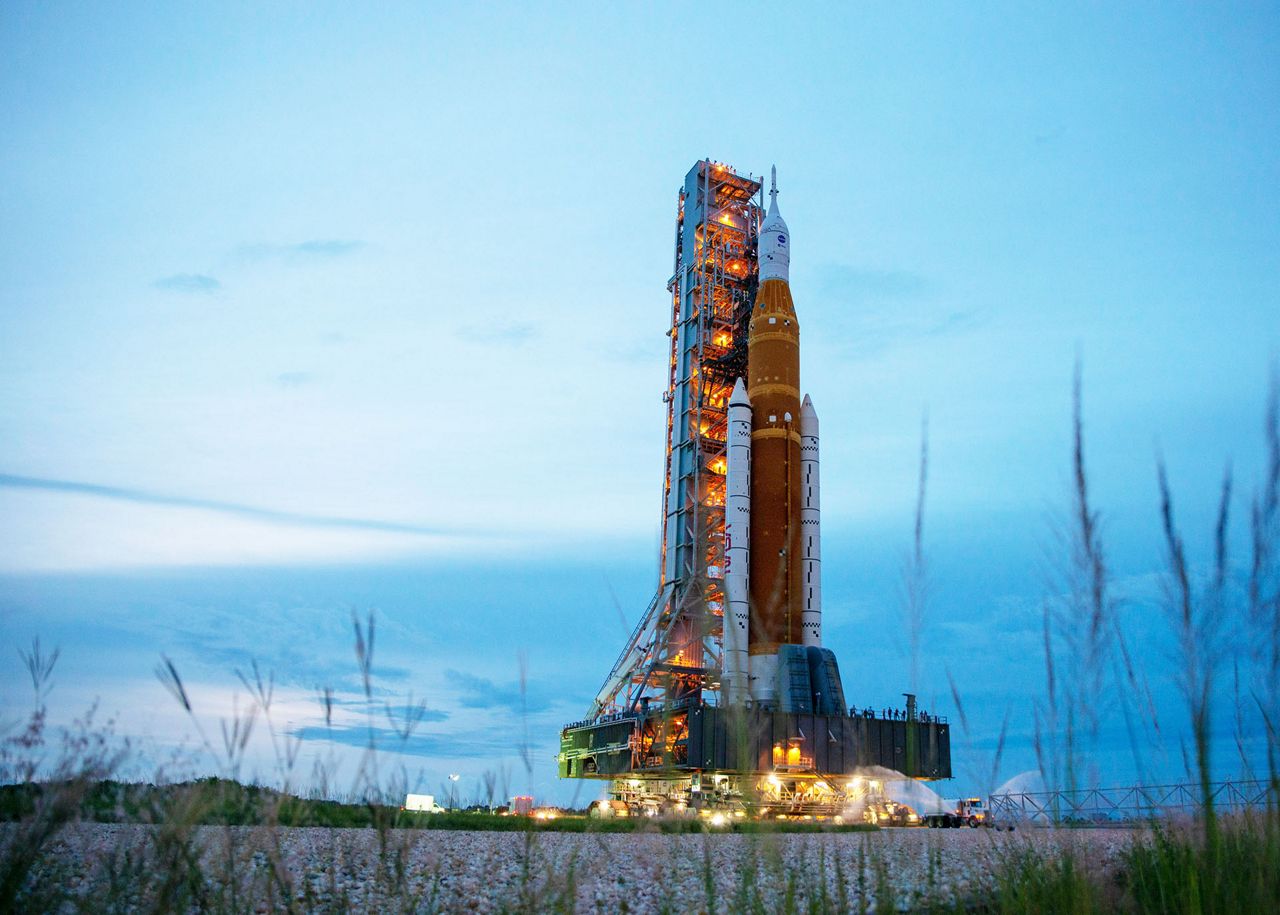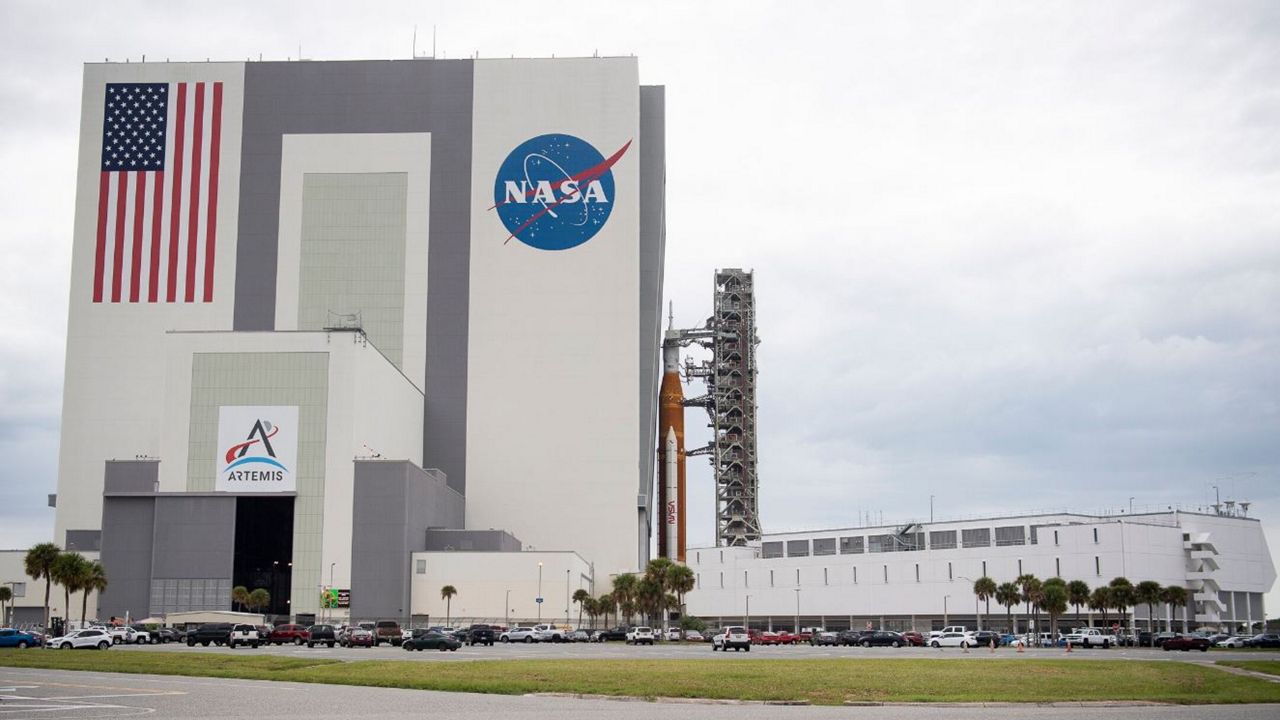KENNEDY SPACE CENTER — After a series of delays from leaking seals to Hurricane Ian, NASA announced the date for the fourth launch attempt of the Artemis I moon mission.
What You Need To Know
- The new target date is Monday, Nov. 14
- The space agency is targeting Friday, Nov. 4, to roll Artemis moon rocket and Orion back to launch pad
- RELATED: Ian forces NASA to prepare rollback of Artemis moon rocket
The new target date is Monday, Nov. 14, with a 69-minute launch window opening at 12:07 a.m. EST, NASA stated in a blog post on Wednesday.
If something should happen that would push the launch back, NASA has requested back-up dates of Wednesday, Nov. 16, at 1:04 a.m. and Saturday, Nov. 19, at 1:45 a.m., with two-hour launch windows for both.
If the launch happens Nov. 14, NASA confirmed that the mission time would be 25 and a half days, and that the Orion spacecraft would return on Friday, Dec. 9, splashing down in the Pacific Ocean.

Delays have plagued the mission
A total of three launch attempts came and went for the Orion and its traveling companion, the Space Launch System rocket.
The first attempt for the uncrewed mission was on Monday, Aug. 29, but it was canceled due to a liquid hydrogen leak and temperature issues with the engines.
Once those issues were dealt with, the next try was on Saturday, Sept. 3, but it was scrubbed after a liquid hydrogen leak at the 8-inch quick disconnect line which is an umbilical that is used to feed and drain the liquid hydrogen fuel from the storage tanks to the rocket’s core stage.
NASA engineers replaced two seals and later did a cryogenic demonstration test to see if the replacements to the fuel lines that go from the mobile launcher to the rocket worked.
But another liquid hydrogen leak was discovered, but NASA called the test a success since all the objectives were met and engineers were able to manage the leak and fill up the liquid hydrogen side of the rocket.
With that news, NASA officials were gearing up for a Tuesday, Sept. 27, launch but this time, it was Hurricane Ian that forced their hands to roll both the rocket and the spacecraft from Launch Pad 39B at the Kennedy Space Center to the Vehicle Assembly Building. Ian hit the Kennedy Space Center on Thursday, Sept. 29.

Going back to the pad
Since the duo is back in the Vehicle Assembly Building, NASA confirmed that inspections and minimal work have been done to prepare them for the rollout back to the launch pad, which can take six to 12 hours to make the 4-mile journey.
“Teams will perform standard maintenance to repair minor damage to the foam and cork on the thermal protection system and recharge or replace batteries on the rocket, several secondary payloads, and the flight termination system,” NASA stated on Wednesday.
The space agency is targeting Friday, Nov. 4, to roll the pair back.
The Artemis program has three missions: Artemis I, Artemis II and Artemis III.
Artemis I is an uncrewed test flight that is designed to provide NASA with information that will be utilized for the two later missions. Currently, Artemis II is scheduled for 2024 (when astronauts will orbit the moon) and Artemis III is set for 2025, which will see the return to humans on the moon.



